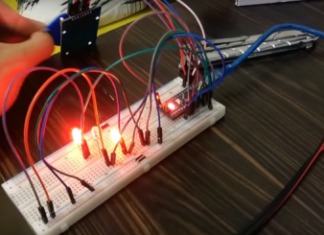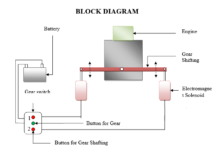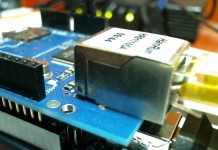Bandwidth Recycling in IEEE 802.16 Networks
Abstract
IEEE 802.16 standard was designed to support the bandwidth demanding applications with quality of service (QoS). Bandwidth is reserved for each application to ensure the QoS.For variable bit rate (VBR) applications, however, it is difficult for the subscriber stations (SSs) to predict the amount of incoming data. To ensure the QoS guaranteed services, the SS may reserve bandwidth more than the amount of its transmitting dataAs a result, the reserved bandwidth may not be fully utilized all the time.we propose a scheme, named Bandwidth Recycling, to recycle the unused bandwidth without changing the existing bandwidth reservation.The idea of our scheme is to allow other SSs to utilize the unused bandwidth when it is availableThus, not only the same QoS guaranteed services can be provided but also the system throughput can be improved.
Existing System
Important part in bringing out the network services lies in existing technology. Routing and switching are the main methods of delivering the data through the network. Both have their disadvantages and benefits and there are many variations of them applying in different ways to different situations. Another big issue is the resource handling with QoS. In IP world, there are a few proposals to resource handling problems and besides that there are a few technologies providing different approaches to QoS problems. These include for instance ATM and Gigabit Ethernet.
Switching
Data transmission by purely switching the traffic through the network is the method used traditionally in telecommunications systems. Essentially switching means that a constant bandwidth is allocated from the total bandwidth of the transmission medium and the whole allocated bandwidth is used for data interchange for the time that the bandwidth allocation is taking place. Normally, this kind of bandwidth usage is connection oriented and requires the interchange to contain different phases including connection establishment, data interchange and connection closing.
In fact this kind of a switching is normally accomplished at OSI protocol stack layer 2, which is the link layer. Throughout this text this kind of a switching is regarded as layer 2 switching. Actually, layer 2 switching can simply be considered bridging and in this logic, layer 3 switching is routing .
Routing
In turn, routing is the the main method used in TCP/IP networks nowadays. Routing uses the bandwidth in a different way. It does not allocate constant bandwidth. Instead, in routing, the data is transported in packages that are delivered through the network by searching for the right directions in network nodes that are called routers. Therefore routing is regarded as connectionless and it does not require the data interchange phases that are needed in switching. Routing could be thought as a way of optimizing the bandwidth usage.
Proposed System
Bandwidth reservation allows IEEE 802.16 networks to provide QoS guaranteed services. The SS reserves the required bandwidth before any data transmissions. Due to the nature of VBR applications, it is very difficult for
the SS to make the optimal bandwidth reservation. It is possible that the amount of reserved bandwidth is more than the demand. Therefore, the reserved bandwidth cannot be fully utilized. Although the reserved bandwidth can be adjusted via BRs, however, the updated reserved bandwidth is applied as early as to the next coming frame and there is no way to utilize the unused bandwidth in the current frame. In our scheme, the
SS releases its unused bandwidth in the current frame and another SS pre-assigned by the BS has opportunities to utilize this unused bandwidth. This improvesthe bandwidth utilization. Moreover, since the existing bandwidth reservation is not changed, the same QoS guaranteed services are provided without introducing any extra delay
Algorithm:
Dynamic bandwidth request-allocation algorithm and Priority-based Scheduling Algorithm
A dynamic bandwidth request-allocation algorithm for real-time services is proposed in . The authors predict the amount of bandwidth to be requested based on the information of the backlogged amount of traffic in the queue and the rate mismatch between packet arrival and service rate to improve the bandwidth utilization. The research works listed above improve the performance by predicting the traffic coming in the future. Instead of prediction, our scheme can allow SSs to accurately identify the portion of unused bandwidth and provides a method to recycle the unused bandwidth. It can improve the utilization of bandwidth while keeping the same QoS guaranteed services and introducing no extra delay
Modules:
1. Bandwidth utilization Module:
Bandwidth utilization improvements have been proposed in the literature. In, a dynamic resource reservation mechanism is proposed. It can dynamically change the amount of reserved resource depending on the actual number of active connections. The investigation of dynamic bandwidth reservation for hybrid networks is presented in. Evaluated the performance and effectiveness for the hybrid network, and proposed efficient methods to ensure optimum reservation and utilization of bandwidth while minimizing signal blocking probability and signaling cost. In, the enhanced the system throughput by using concurrent transmission in mesh mode
2. Packet creation Module:
In this module we split the Data in to N number of Fixed size packet with Maximum length of 48 Characters.
3. Bandwidth recycling Module:
The complementary station (CS). Waits for the possible opportunities to recycle the unused bandwidth of its corresponding TS in this frame. The CS information scheduled by the BS is resided in a list, called complementary list (CL). The CL includes the mapping relation between each pair of pre-assigned C and TS.
4. QoS guaranteed services Module
It is different from the bandwidth adjustment in which the adjusted bandwidth is enforced as early as in the next coming frame. Moreover, the unused bandwidth is likely to be released temporarily (i.e., only in the current frame) and the existing bandwidth reservation does not change. Therefore, our scheme improves the overall throughput while providing the same QoS guaranteed services.
5. Traffic and Packet Performance:
The Packet mean data rate of each application but make the mean packet size randomly selected from 512 to 1024 bytes. Thus, the mean packet arrive rate can be determined based on the corresponding mean packet size. As mentioned earlier, the size of each packet is modeled as Poisson distribution
And the packet arrival rate is modeled as exponential distribution.
The other factor that may affect the performance of bandwidth recycling is the probability of the RM to be received by the CS successfully.
System Requirements
Hardware Requirements:
PROCESSOR : PENTIUM IV 2.6 GHz
RAM : 512 MB DD RAM
MONITOR : 15” COLOR
HARD DISK : 20 GB
FLOPPY DRIVE : 1.44 MB
CDDRIVE : LG 52X
KEYBOARD : STANDARD 102 KEYS
MOUSE : 3 BUTTONS
Software Requirements:
Front End : Java, Swing
Back End : MS Access
Tools Used : Eclipse 3.3
Operating System : WindowsXP/7
[ads1]












